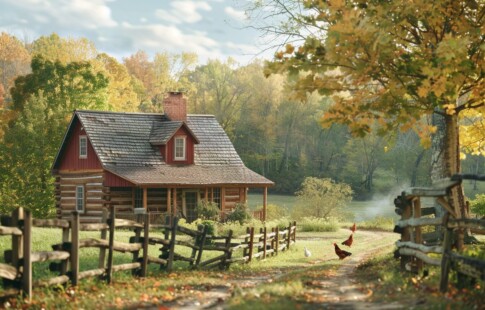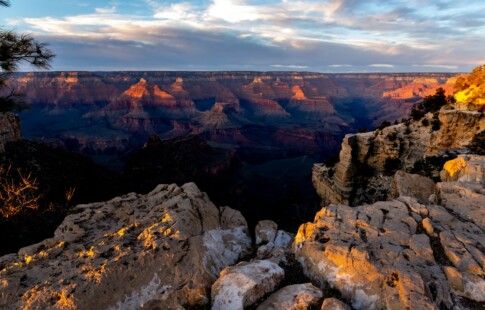
What Plant Biodiversity Means and How to Calculate It
We are reader-supported. When you buy through links on our site, we may earn affiliate commission.
When you think of plant biodiversity, what springs to mind? Perhaps you envision a lush rainforest, a garden overflowing with different fruits, or a savannah populated with a rich matrix of grasses. But what does biodiversity mean on a scientific level? How do you calculate it, and why is it important to the world at large?
Plant Biodiversity, Abundance, and Species Richness Explained
Some people use these terms interchangeably, but they have different meanings in biology.
- Abundance
Abundance is the total number of organisms in an area. So, if you wanted to measure the abundance of plants in your backyard, you would count every plant — including trees, flowers, and shrubs — and add up the total to find the abundance.
For example, if your yard contains one pecan tree, three cenizo bushes, and five daisies, the abundance is nine. Finding species abundance doesn’t require any math beyond counting and adding.
- Species Richness
This term refers to how many distinct species are in a given area. If your yard contains only pecan trees, cenizo, and daisies, the species richness is three. It doesn’t matter how many of each species you have in your yard — there might be a thousand daisies, but if you have at least one tree and bush as well, then the species richness is three.
As with abundance, finding species richness involves little more than tallying up the species you see around you.
- Biodiversity
Picture this: Your patio garden contains one tomato plant, one basil, and 100 strawberry plants. The abundance is 102 and the species richness is three. As far as you can see, strawberries overwhelm the landscape.
Now, imagine your garden has 50 tomato plants, 25 basil, and 27 strawberry plants. The abundance is still 102 plants and the species richness is still three. However, the landscape has changed a lot! Things are much more balanced now — in other words, your garden is more biodiverse, meaning one species isn’t completely dominating the landscape.
Species richness and abundance are helpful starting points when figuring out how an area looks, but they don’t tell the whole story. That’s where biodiversity comes in.
Low plant biodiversity means a handful of species are extremely common while everything else is rare, or that only one species lives in an area. For example, if a landscape is completely barren except for tumbleweeds, it has low biodiversity. Or, if there are 1,000 tumbleweeds for every one mesquite tree and dandelion, that’s still low plant biodiversity.
High biodiversity means all — or almost all — species are represented equally in the landscape. Don’t confuse it with abundance, the total number of organisms, or richness, the total number of species. Even if a greenhouse contains just one of each kind of vegetable, it still has high biodiversity because all the plants are equally common.
How Do You Calculate Biodiversity?
Determining biodiversity is a little more complicated than finding species richness or abundance, but you can do it with the help of the Shannon Diversity Index (represented by the letter “H”). The formula is:
H = -Σ(Pi) * ln(Pi)
Here’s what each part of the equation means:
- H: Biodiversity, represented by the Shannon Diversity Index
- -Σ: Negative sum
- Pi: Not to be confused with the Greek letter “pi,” this stands for the proportion of individuals in each species.
- ln: Natural logarithm
It’s helpful to draw up a table to do this calculation. You’ll have one row for each species and four total columns: the abundance, Pi, ln(Pi), and Pi * ln(Pi) of each species. You also need a column for the totals. From there, you can plug the numbers into each empty cell on your table and do the calculations.
If math isn’t your strong suit — or you’re crunching lots of numbers — you can use a Shannon Diversity Index calculator to quickly find an area’s biodiversity. Simply type in the number of individuals in each population, and the calculator will determine the species richness, abundance, and biodiversity of your sample.
What Are Examples of Plant Biodiversity?
One of the most famous examples is the Amazon Rainforest. Boasting more plant biodiversity than anywhere else on Earth, it’s home to some 50,000 plant species. No wonder it’s a hub for critical scientific research and a strong focus for conservation efforts.
Like many tropical nations, Madagascar is also extremely diverse in terms of plants — and extremely vulnerable. Scientists have only formally assessed one-third of all plant species on the island for threats, with unsustainable agriculture threatening nearly 90% of Malagasy plant species. Many of these species are endemic. That means they’re found nowhere else in the world.
In general, warm, tropical, humid areas are the best places to look for high plant biodiversity.
Why Do We Need Plant Biodiversity?
Biodiversity is a safeguard against many problems. A high degree of crop biodiversity, for example, ensures people have a variety of foods that grow in different climates at different times of year, securing our food supply. Many of the world’s medicines and other useful chemicals come from plants — and many more are probably still out there, undiscovered.
Plant biodiversity supports animal biodiversity, allowing species like honeybees to pollinate crops and make honey. It means livestock can graze on a variety of grasses that supply them with different nutrients. It also means landscapes are more resistant to plant diseases that could threaten our food supply.
We need biodiversity to secure our future. There could be almost 10 billion people by 2050, and we will rely on many species of plants and animals to support our population growth and continued success.
Supporting Biodiversity
There are many ways you can help improve plant biodiversity. Starting in your own yard, you can remove invasive species, plant natives, and stop using herbicides that affect native plants. You can give people seeds and seedlings to beautify their own yards and improve biodiversity on a larger scale. You can also lobby for change, support conservation initiatives, and vote for people who prioritize conservation.
Plants are more than just beautiful — they are deeply important to the world at large. Let’s protect their future to ensure our own.
Share on
Like what you read? Join other Environment.co readers!
Get the latest updates on our planet by subscribing to the Environment.co newsletter!
About the author
Rachel Lark
Rachel serves as the Assistant Editor of Environment.co. A true foodie and activist at heart, she loves covering topics ranging from veganism to off grid living.





